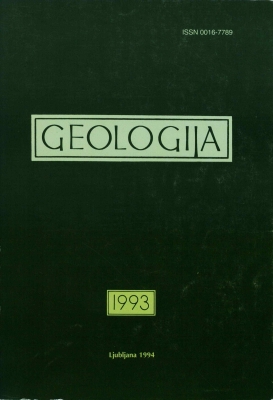The Alpine marmot from the cave Matjaževe kamre
DOI:
https://doi.org/10.5474/geologija.1994.005Abstract
The excavations carried out in the Pleistocene sediments of a minor chamber belonging to a major cave complex, referred to as Matjaževe kamre, disclosed a paleolithic station with two cultural horizons of various ages and a fauna rather abundant in quantity but frugal in the number of species involved. In the present treatise the two authors deal merely with the paleontological elaboration of Alpine marmot fossil remains assembled in the layer 2 of the paleolithic station as well as in the adjacent side gallery of the same cave complex. In the paleolithic station the bones have been crashed and burnt on purpose, while in the side gallery, they have persisted nearly intact. The comparisons of measured dimensions of teeth, and of cranial and postcranial skeleton with findings of Alpine marmots of the same or surpassing age on the territory of Slovenia, show that measures differ but slightly, agreeing usually with the size of recent animals. Due to the fact that the fauna unearthed from the layer 2 is essentially represented by the fossil remains of the Alpine marmot, whilst the representatives of the tundra are missing, the authors attributed this layer to the late glacial. The statement is furthermore confirmed by the classification of stone tools having been discovered in the same layer and attributed by Osole (1974, 29) to Epigravettian. The marmot remains from the side gallery are most probably of the same age.Downloads
How to Cite
Pohar, V., & Kotnik, J. (1993). The Alpine marmot from the cave Matjaževe kamre . Geologija, 36(1), 95–117. https://doi.org/10.5474/geologija.1994.005
Issue
Section
Articles

